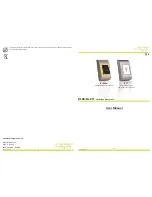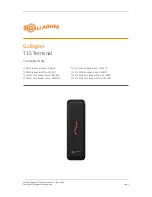
01010101100110101010110011010101011001101010101100110101010110011010101011001101010101100110
100110101010110011010101011001101010101100110101010110011010101011001101010101100110101010110011010101011011010101011
10101010110011010101011011010101001101010100110101101101101010100101
1011010101100110011010101011010101111010111
11010101101101010100111110
1101110110110011
0111011110
111101
011
11
1
Seagate
PC-3000 EXPRESS / UDMA / PORTABLE
F3 architecture
ACE Lab
Technical support: [email protected]
Phone: +7 863 201 50 06
2
ts.acelaboratory.com
1.
I
ntroduction
By the year 2008 Seagate evolved from manufacture of the classic 3.5" Barracuda HDD line (3.5" Barracuda - …
7200.7, 7200.8, 7200.9, 7200.10, Barracuda ES; 2.5" Momentus - … 5400.2, 5400.3, 5400.4 …) to the new F3
architecture intended to unify the production of ATA and SCSI drives. That new architecture is mostly based on
mechanics and the firmware kernel from the ATA hard drives, but a large part of firmware microarchitecture has been
revised in accordance with the design used in SCSI Seagate drives. ROM has been extended and supplemented with the
code enabling the controller board to function in ATA mode without the HDA attached. Furthermore, the manufacturer
moved to ROM adaptive data and HDD ID information (due to that fact a board disconnected from HDA can return via
the ATA interface HDD ID containing correct HDD information
). However, together with useful effects of that
combination the new architecture also inherited a number of problems from both its parent lines. In particular, it
includes a number of problems related to translator corruption (issues typical of SCSI HDD), the Pending Bug problem,
etc. The new architecture also encountered some issues related to the integration of previously independent platforms
and addition of new functionality. In this guide we describe the Arch F3 platform, typical problems of its models, drive
diagnostics, and the methods available for work with these HDD in the PC-3000 suite.
1
FW in the ROM of some Seagate drives contains the default HDD ID, which is updated with the information from
disk surface in individual drives. Moreover, when the firmware on disk surface appears to be inaccessible for some
reason, a drive may return the HDD ID template with the default model name and serial number (while the actual
serial number is preserved in the ROM data structures).



































